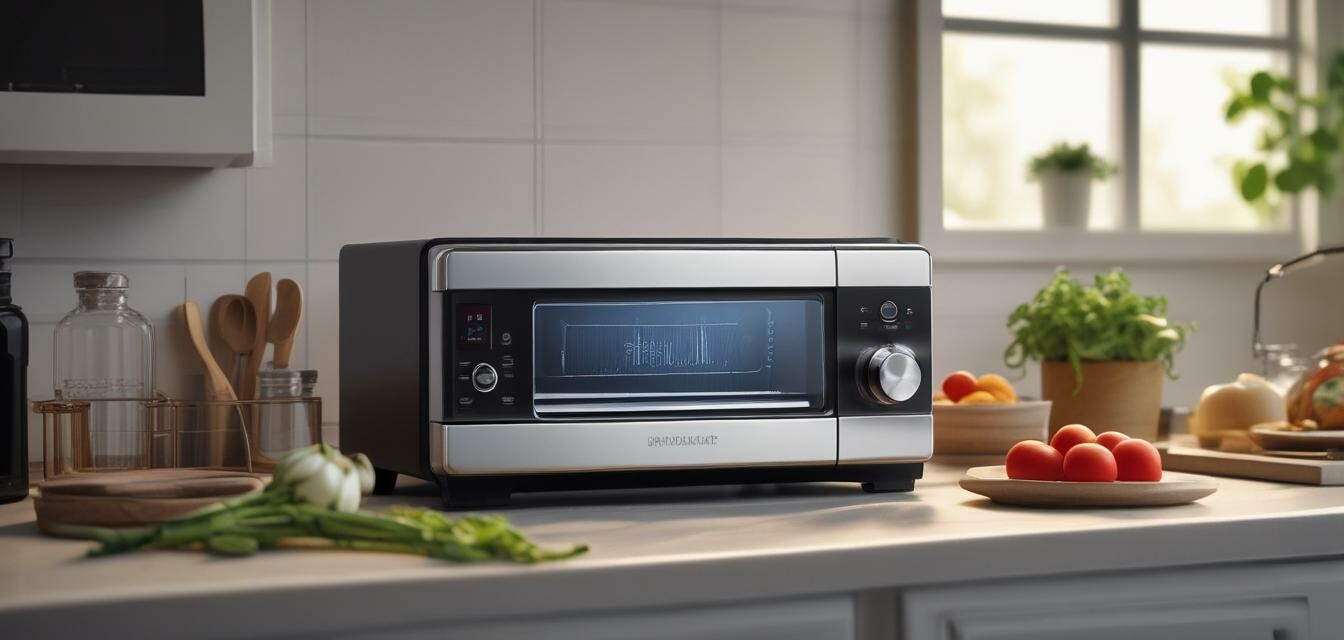
Essential Smart Cooking Tools for Healthy Eating
Key Takeaways
- Smart kitchen tools can enhance your cooking experience while promoting healthy eating habits.
- Integrating smart technology into your kitchen can streamline meal prep and cooking processes.
- Identifying the right tools for your needs can simplify healthy eating without sacrificing flavor.
- Consider factors like compatibility, ease of use, and safety features when selecting smart appliances.
As health consciousness continues to grow in our society, smart cooking tools have emerged as essential companions in our kitchens. These innovative gadgets can help simplify cooking processes while encouraging healthier eating habits. Whether you're a seasoned chef or just beginning your culinary journey, the right smart tools can make all the difference.
Why choose smart cooking tools?
Smart cooking tools enhance your cooking experience, making it easier to prepare healthy meals. Features like connectivity, precision measuring, and advanced cooking modes help take the guesswork out of cooking. Here’s a look at the benefits:
- Increased Efficiency: Save time with features that automate cooking processes.
- Precision: Use smart scales and ovens for exact measurements and cooking temperatures.
- Healthy Options: Get recipe suggestions for healthy living through smart appliances.
Essential smart cooking tools for your kitchen
Smart ovens
Smart ovens come equipped with features that allow for hands-free cooking. From pre-programmed settings to remote control options, they transform the way you cook:
- Convection cooking for even heat distribution
- Bluetooth and Wi-Fi connectivity for easy control
- Recipe guidance through integrated software
Bluetooth-enabled kitchen scales
Measuring ingredients accurately is crucial for healthy cooking. Bluetooth-enabled kitchen scales take the hassle out of measuring:
- App integration for tracking nutritional values
- Easy measurement conversions
- Automatic ingredient lists for recipes
Touchless faucets
Hygiene is paramount in food preparation, and touchless faucets contribute to a cleaner environment:
- No need to touch surfaces, reducing bacteria transfer
- Water flow control with sensors for hands-free use
- Water temperature control through smart technology
Smart blender
Preparing smoothies and soups has never been more straightforward with a smart blender:
- Programmable settings for different recipes
- Self-cleaning features for convenience
- Mobile app integration for recipe suggestions
Comparing smart cooking tools
| Tool | Key Features | Health Benefits |
|---|---|---|
| Smart Ovens | Wi-Fi control, recipe diagnostics, convection heating | Promotes cooking with less oil and control over temperatures. |
| Bluetooth Scales | App syncing, nutritional tracking, precision | Helps maintain portion control and balanced recipes. |
| Touchless Faucets | Sensor activation, temperature control | Encourages hand hygiene during food prep. |
| Smart Blenders | Programmable blends, self-cleaning, app connectivity | Supports healthy ingredient combinations for smoothies and soups. |
Tips for choosing the best smart cooking tools
Beginner's Section
- Set a budget: It's important to determine how much you're willing to spend beforehand.
- Identify needs: Figure out what your biggest cooking challenges are and find tools to address them.
- Research compatibility: Ensure that any smart tools you select work well with your other kitchen devices.
- Read reviews: Check user feedback to help guide your selection process.
- Look for warranties: Opt for products with warranties to protect your investment.
Conclusion
The world of smart cooking tools is vast, offering numerous options to support healthy eating habits. From smart ovens to Bluetooth scales, each tool brings unique advantages to simplify and enhance your cooking experience. By choosing the right tools, you can enjoy preparing healthy meals with ease. For additional insights, explore our Smart Kitchen Buying Guides to discover more about high-tech kitchen appliances.
Pros
- Promotes healthy eating habits.
- Enhances cooking efficiency.
- Offers convenience through technology.
Cons
- Higher initial investment cost.
- Requires learning to utilize various features.
- Dependence on technology which may fail.